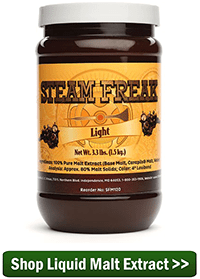 Beer blogger Bryan Roth explores the subtle differences between two classic beer styles: stouts vs. porters.
Beer blogger Bryan Roth explores the subtle differences between two classic beer styles: stouts vs. porters.
—–
Brewing up a variety of beer recipes is one of the reasons why many get into the hobby of homebrewing. While you may be excited about creating something experimental (watermelon wheat, anyone?) honing base beer recipes is important, especially if you want to better understand the beers we love so much.
You may enjoy extra hoppy IPAs, but porters and stouts can offer tons of complex, malt-forward flavors. But what exactly are the differences between the stouts and porters? Sure, they both look dark, but there are plenty of slight differences that go into each beer. But what makes both beer styles different. What is the difference in taste?
Here’s a helpful history lesson: stouts came into existence as a descriptor for a stronger version of a beer style. A “brown stout” in the 1700s was simply a porter with higher alcohol content. Changes to brewing and brewing laws over the next 200 years eventually made way to how we recognize these beers today.
The most important change from the 1700s? The use of roasted barley.
While the BJCP outlines various styles of porters and stouts, here are basic characteristics of what you should aim for when crafting your next version of either, courtesy of Randy Mosher’s Tasting Beer. These are the basic characteristics that define the difference between stouts and porters:
| Porter | Stout | |
| Flavor | Creamy roasty-toasty malt, hoppy or not | Always roasty; may have caramel and hops too |
| Aroma | Roasty maltiness; usually little or no hop aroma | Roasty malt; with or without hop aroma |
| Balance | Malt, hops, roast in various proportions | Very dry to very sweet (depending on style) |
These are slight differences, but important if you want to nail your next batch.
 Another tip to consider when creating your recipe is the success of others. According to Ray Daniels’ book, Designing Great Beers, the key difference between the winning porter and stout recipes from the National Homebrew Competition was – no surprise – the use of malt.
Another tip to consider when creating your recipe is the success of others. According to Ray Daniels’ book, Designing Great Beers, the key difference between the winning porter and stout recipes from the National Homebrew Competition was – no surprise – the use of malt.
The average grain bill of well-performing homebrewed porter used 80 percent pale ale malt while stout beer recipes used an average of 61 percent. The other big difference was the use of roasted barley, which was twice as much in stouts (8 percent) compared to use in most porters (4 percent).
Generally speaking, pale ale malt would supply a beer with more “toasty” flavors. Roasted barley, of course, would impart flavors closely associated to coffee.
That is important, because roasted grains were widely used in successful competition homebrewed stouts (90+ percent) compared to porters, where roasted grains appeared in 30 to 60 percent of “robust” porters, but not at all in brown porters.
All those numbers are to say, for homebrewers, “roasted” is to stouts as “toasty” is to porters.
 If you plan to enter a stout or porter into a judged homebrewing competition, these slight differences will be important to your success. But even if you’ll just be enjoying your creation at home, a better understanding of these two beer styles can help improve your palate, make you a better brewer and give you some extra tasty homebrew to drink! And, that is the difference between stouts and porters in a nutshell.
If you plan to enter a stout or porter into a judged homebrewing competition, these slight differences will be important to your success. But even if you’ll just be enjoying your creation at home, a better understanding of these two beer styles can help improve your palate, make you a better brewer and give you some extra tasty homebrew to drink! And, that is the difference between stouts and porters in a nutshell.
—–
Bryan Roth is a beer nerd and homebrewer living in Durham, North Carolina. You can read his thoughts on beer and the beer industry on his blog, This Is Why I’m Drunk, and send him suggestions on how to get his wife to drink craft beer via Twitter at @bryandroth.

Great article, Bryan. In my home experiments, I tried different mashing temperatures on two batches of dry Irish stout with the same exact recipe. The higher temp version was much more coffee-infused, while the the lower temp version was significantly creamier. It still comes down to malt, either way.